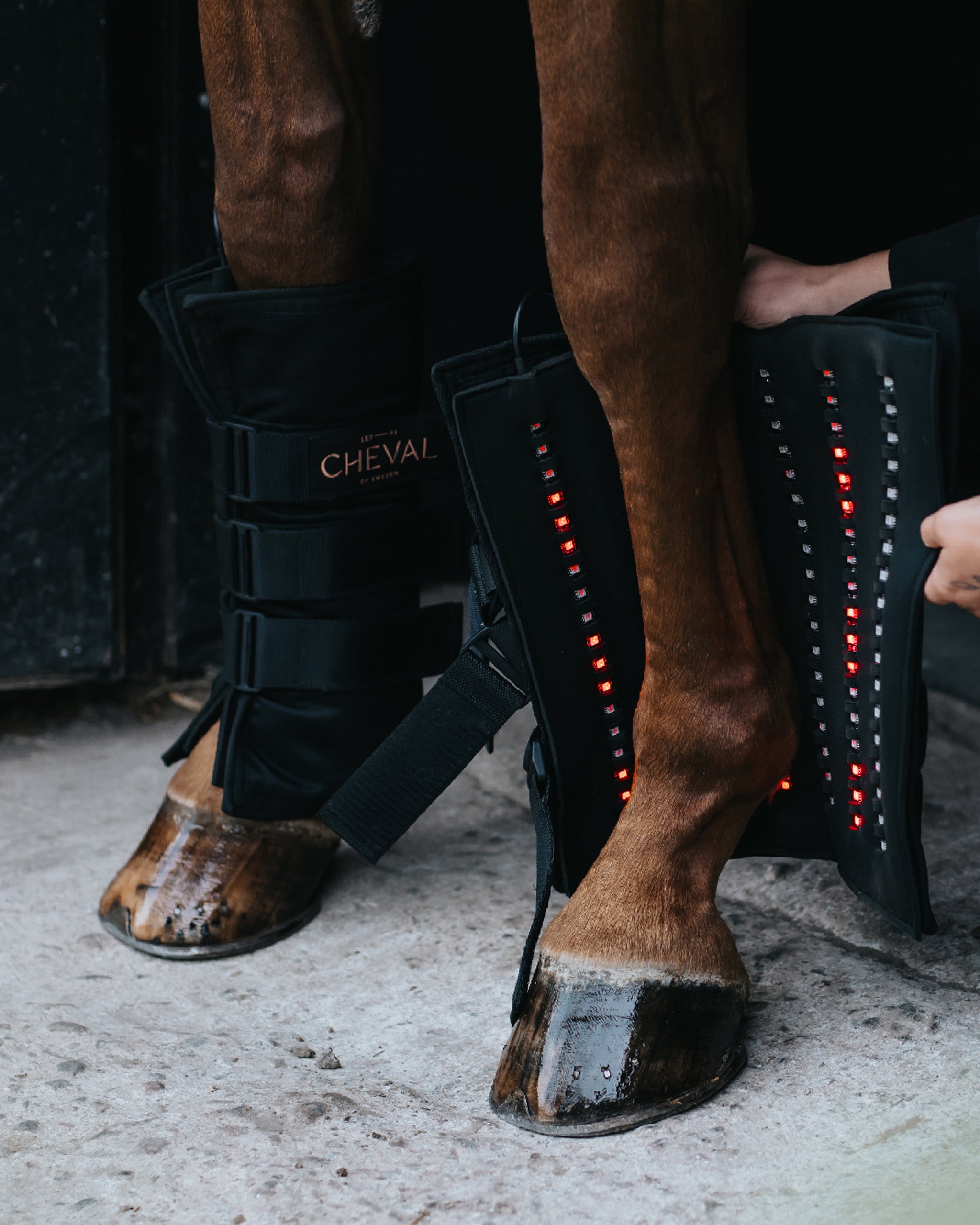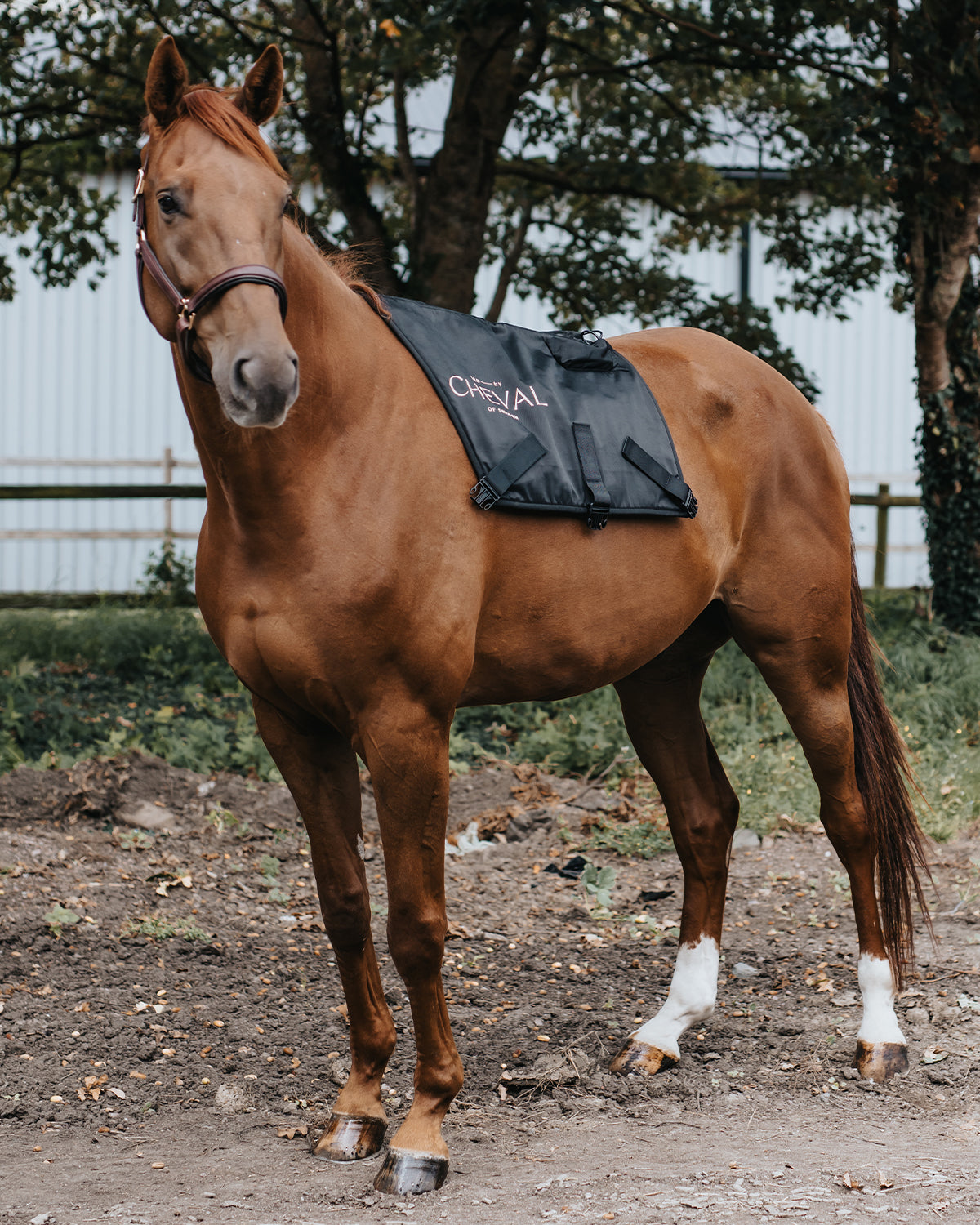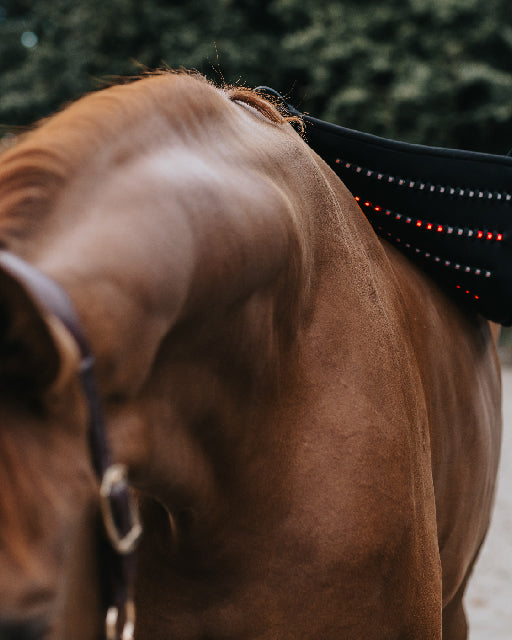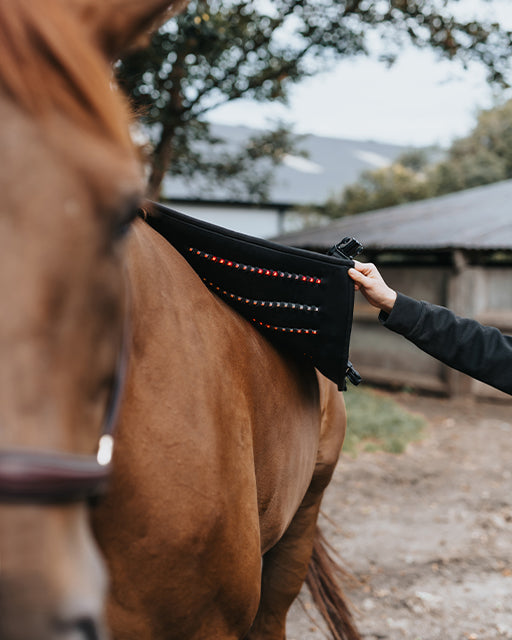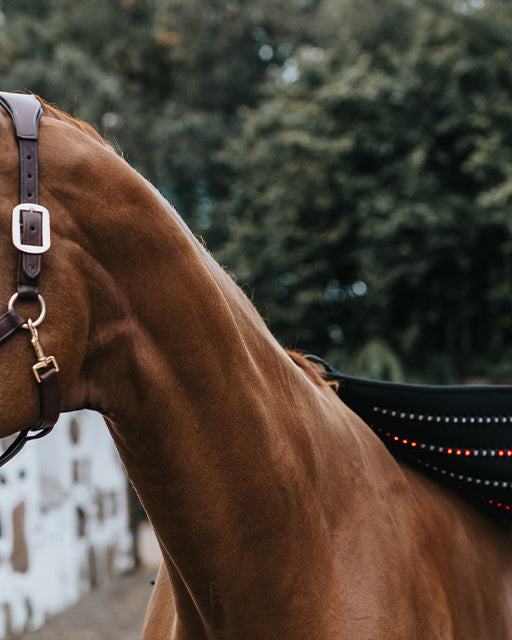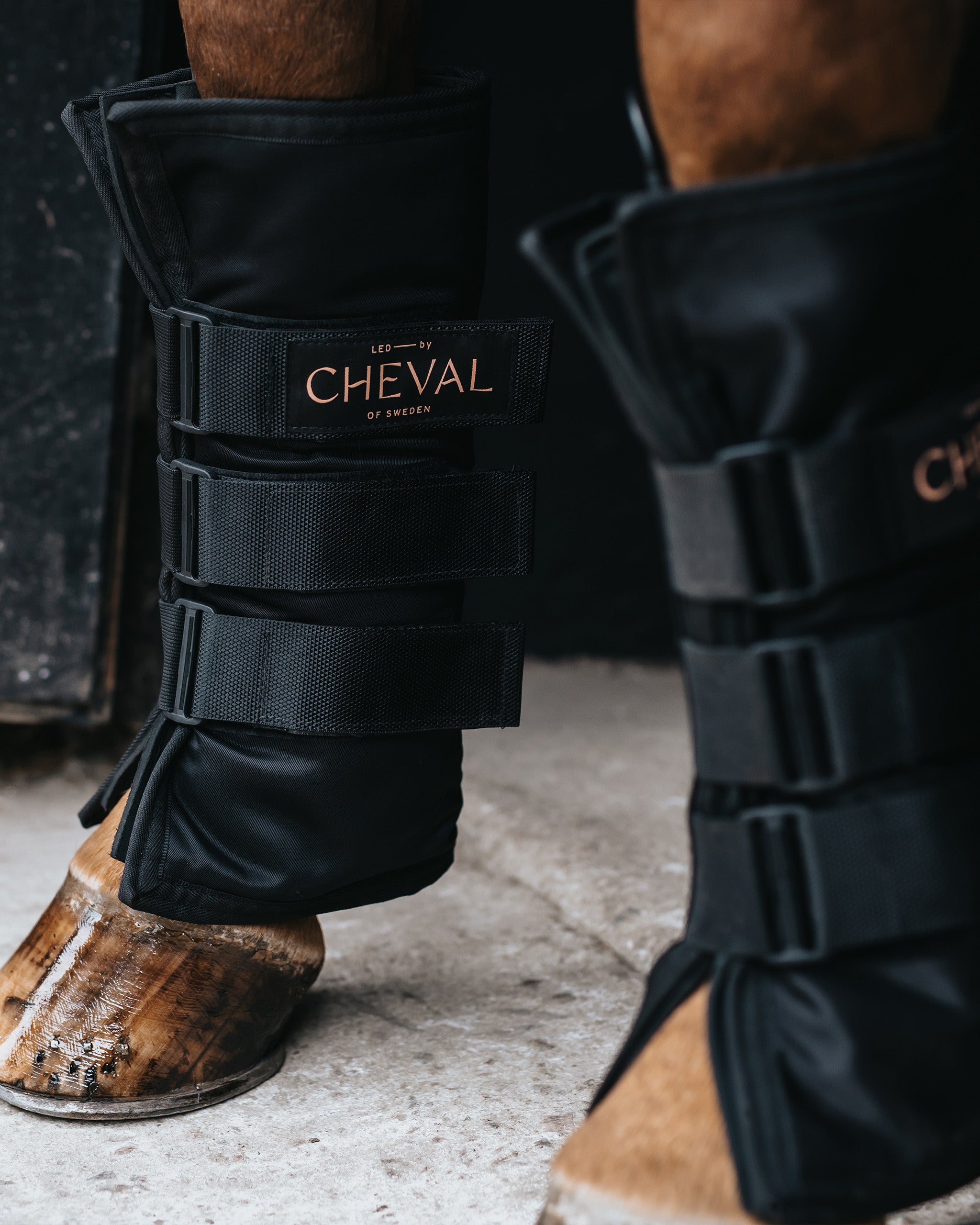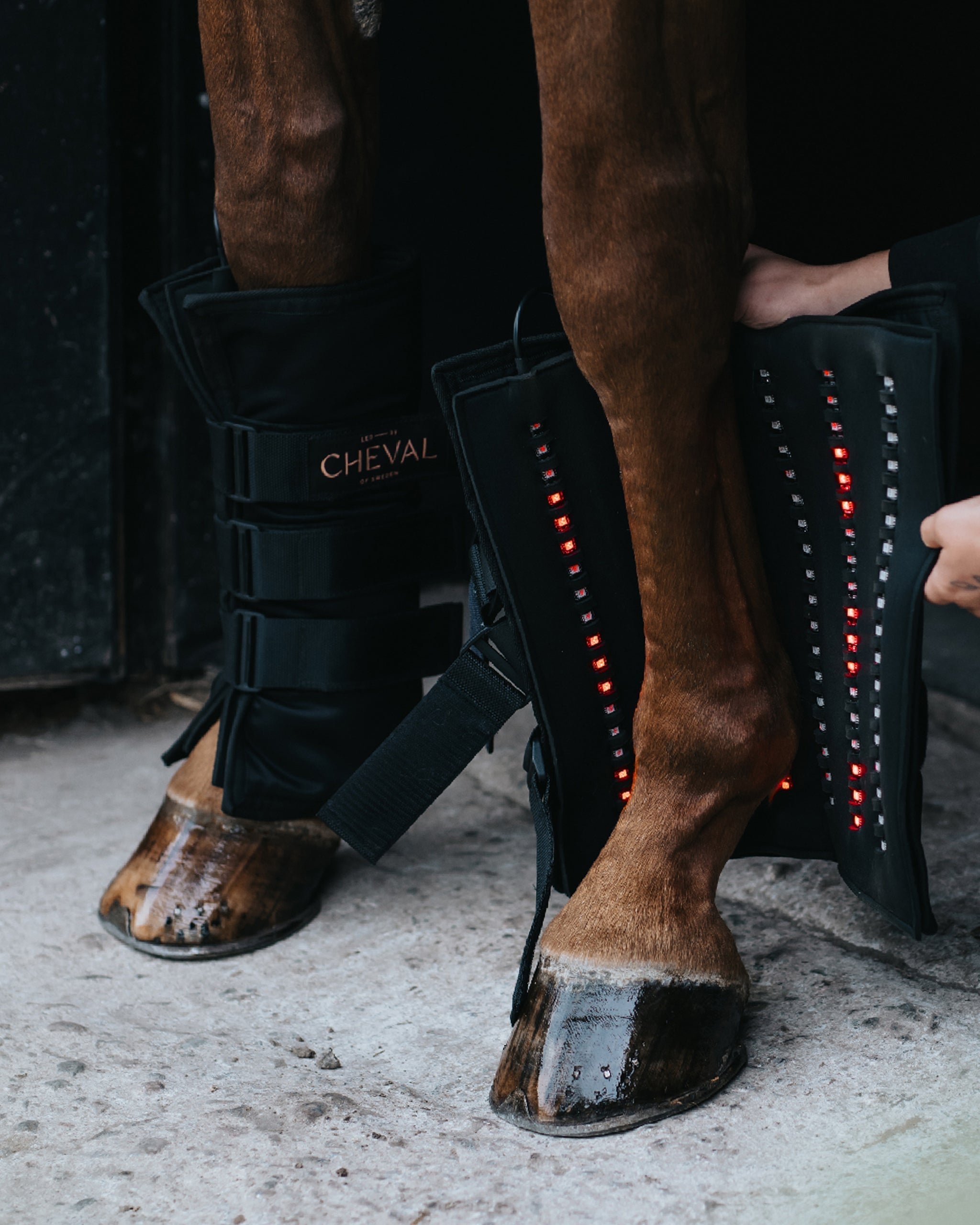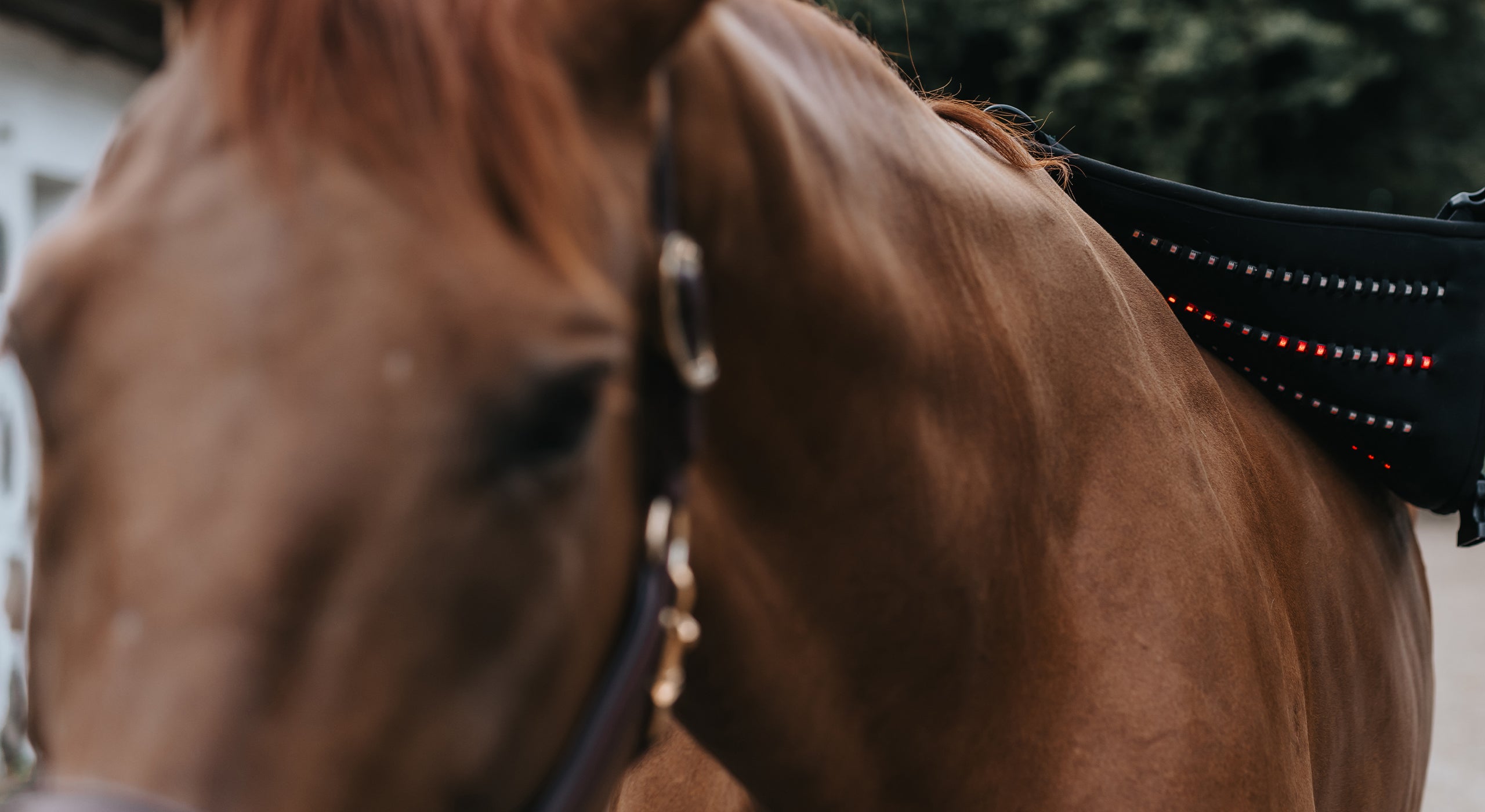Tendon injuries in horses
Tendon injuries are among the most common problems in equine care. They can occur in performance horses and leisure horses alike, often as a result of acute overload, repetitive strain, or long-term wear. Recovery is typically long and unpredictable, and tendons that have been injured once are more vulnerable to re-injury.
LED Treatment for horses provides a non-invasive, scientifically supported way to reduce inflammation, promote circulation, and support tendon repair. By incorporating LED Treatment into a rehabilitation plan, horse owners can give their horses better conditions for safe and consistent recovery.
What is a tendon injury?
Tendons are fibrous connective tissues that connect muscle to bone. They transmit the powerful forces generated by muscles into skeletal movement. When tendons are exposed to overload, the fibres can become overstretched or damaged.
When this happens, the body initiates an inflammatory response that causes heat, swelling, and sometimes pain or lameness. In severe cases, tendon fibre loss leads to scar tissue formation, which can compromise long-term strength and flexibility.
How to detect a tendon injury in horses
Early detection is critical, but tendon injuries are not always easy to recognise. Minor injuries may show only subtle signs, while severe injuries present more obvious changes.
Common symptoms include:
- Heat in the affected tendon
- Swelling
- Pain when pressing on the tendon
- Lameness (which often improves after a few days)
Because symptoms can be mild, regular monitoring and careful palpation of the tendons are essential in horses with demanding workloads.
The three stages of tendon recovery
The tendon recovery process is long and complex, typically divided into three overlapping phases.
1. Inflammatory phase
Occurs within 48 hours of the injury and lasts about a week. Blood clots and fibrin stabilise the injury site, while inflammation develops.
LED Treatment support: Studies suggest LED light can stimulate vascular endothelial growth factor (VEGF) and promote angiogenesis, helping circulation and nutrient delivery to the injured tendon.
2. Proliferative phase
Lasts several weeks. Granulation tissue and collagen type III form to rebuild tendon structure.
LED Treatment support: Research indicates LED Treatment can stimulate fibroblast activity and collagen type III synthesis, strengthening the tendon during this rebuilding stage.
3. Remodelling phase
Extends for months. Type III collagen is gradually replaced with stronger type I collagen, and tissue reorganisation improves strength and alignment.
LED Treatment support: Light therapy has been shown to activate M2 macrophages, reduce inflammatory factors, and encourage type I collagen synthesis, supporting more resilient tendon tissue.
How LED Treatment supports tendon recovery
Photobiomodulation (PBM), often referred to as LED Treatment, uses specific wavelengths of red and near-infrared light to trigger cellular responses. In tendon care, LED light is understood to work in several ways:
- Reducing inflammation by downregulating pro-inflammatory cytokines
- Promoting circulation and angiogenesis for better oxygen and nutrient supply
- Supporting collagen production to restore tendon structure and function
- Modulating oxidative stress to protect cells during recovery
Together, these effects support tissue repair and help create conditions for more predictable recovery.
Recommended LED Treatment plan for tendon injuries in horses
- Duration: 5 minutes per affected area
- Frequency: 2–3 times daily with at least 90 minutes between sessions
-
Prevention: Once daily after recovery to help reduce risk of re-injury
Always adapt treatment to the individual horse’s workload, condition, and sensitivity. For acute or severe tendon injuries, LED Treatment should be used as a complementary method alongside veterinary care.
Why choose LED by CHEVAL for equine tendon care?
Our LED Treatment Systems are built in Sweden with durability and precision in mind. Designed for the real demands of equestrian life, they combine advanced technology with ease of use:
- Four optimised wavelengths: 660/670, 730, 810, 850 nm
- Short treatment times: 5–10 minutes per area
- Safe, non-invasive, non-thermal light application
- Stable, easy-to-use attachment systems
- Premium, long-lasting materials with a 4-year warranty
With LED by CHEVAL, you can support your horse’s tendon recovery and long-term resilience with confidence.
FAQ: tendon injuries in horses
How long does a tendon injury take to recover in horses?
Tendon recovery can take several months, depending on the severity of the injury. While minor strains may stabilise within weeks, more significant injuries often require 6–12 months before a horse can return to full work. LED Treatment supports the recovery process at every stage.
Can LED Treatment help with tendon injuries in horses?
Yes. Research suggests LED light supports tendon recovery by reducing inflammation, stimulating fibroblast activity, and promoting circulation. This makes it a safe, non-invasive addition to a rehabilitation plan.
What are the first signs of a tendon injury in horses?
The most common early signs are heat, swelling, and sensitivity when pressing on the tendon. In some cases, lameness appears but often improves quickly, which makes early tendon injuries easy to miss.
How often should I use LED Treatment for a tendon injury?
A general plan is 5 minutes per area, 2–3 times daily with at least 90 minutes between treatments. After recovery, once daily sessions can support prevention. Always consult your veterinarian for individual cases.
Why are tendon injuries prone to re-injury?
Scar tissue and structural weaknesses often remain after the first injury, making the tendon less resilient under future stress. Consistent care, including LED Treatment, helps support tissue resilience and reduce risk.
Read more
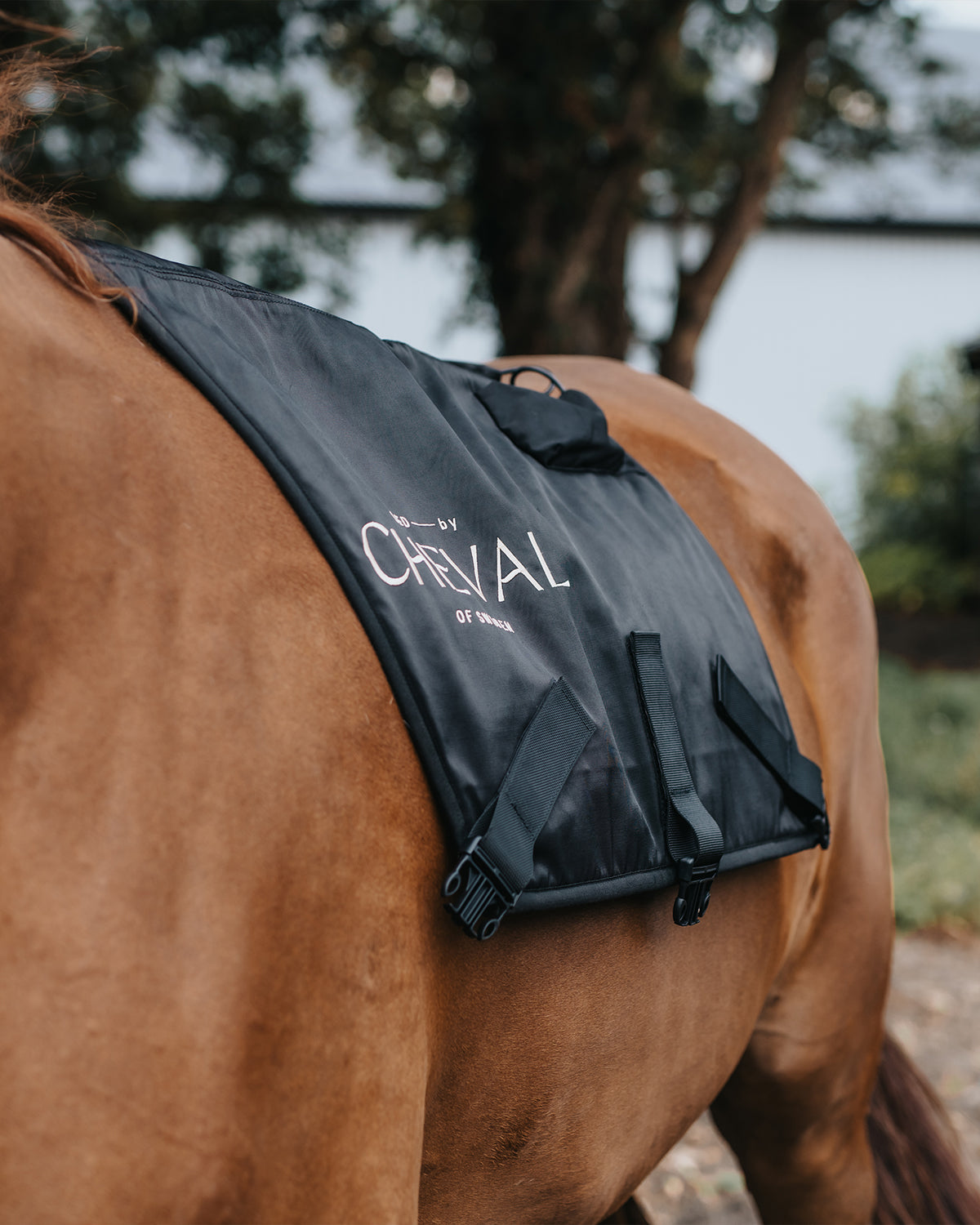
Creating optimal conditions for equine recovery: the LED advantages The LED Treatment System from LED by CHEVAL is a modern advancement in equine care. Designed to support recovery and reduce injur...
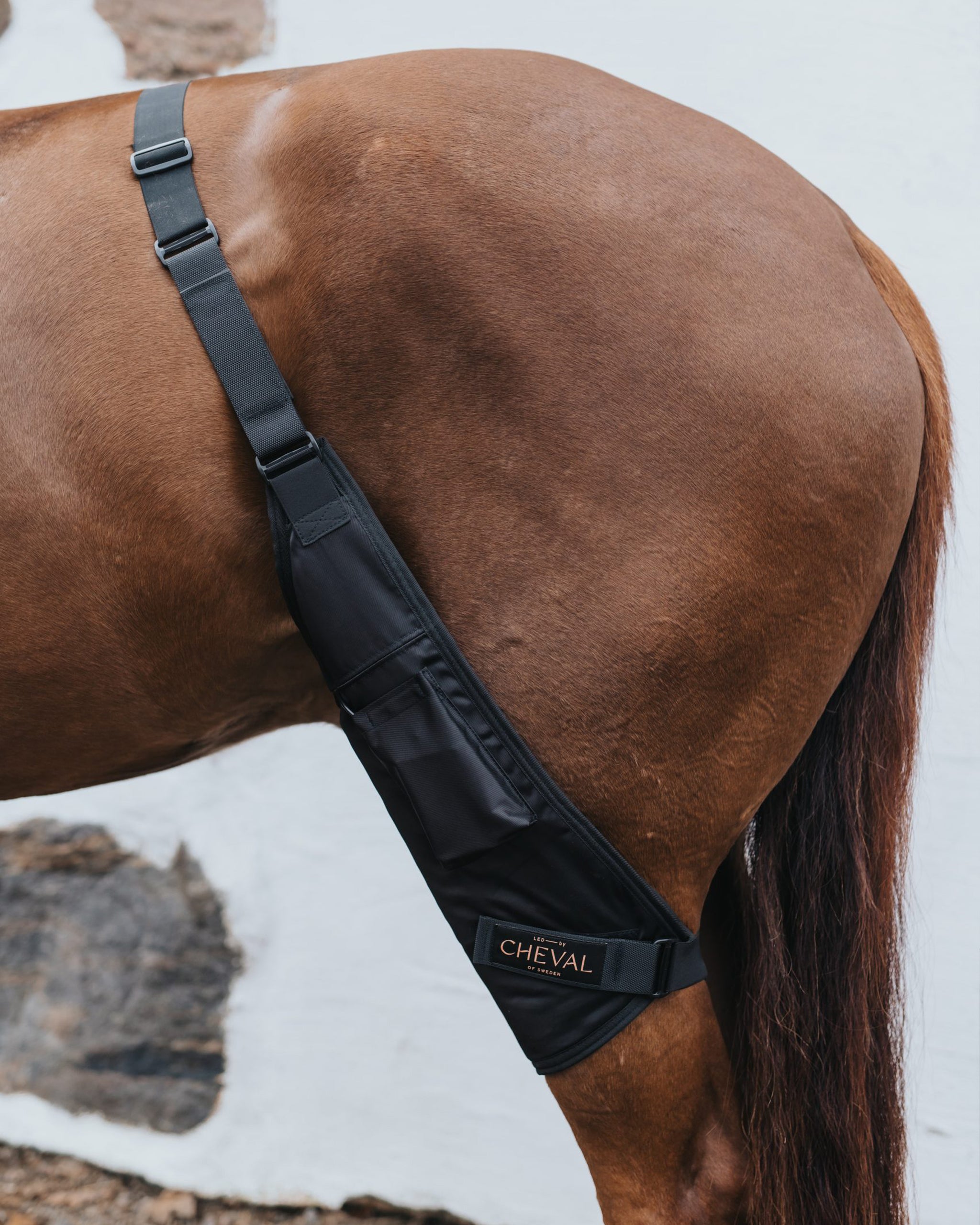
Arthritis (joint inflammation) in horses Arthritis, also known as joint inflammation, is one of the most common conditions affecting horses of all ages and breeds. It causes pain, stiffness, and re...


